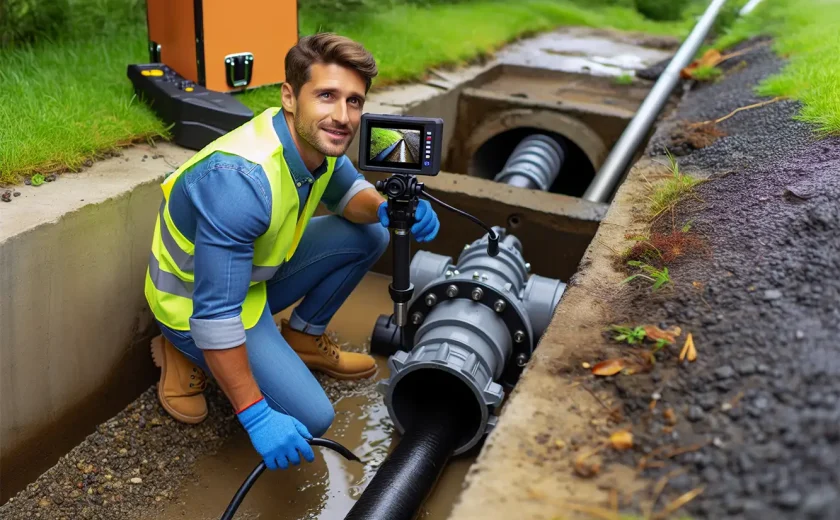A Behind-the-Scenes Look at the Tools Professionals Use to Clear Blocked Sinks and Drains
When your sink or drain is hopelessly blocked, and DIY fixes like plungers, baking soda, or vinegar just aren’t cutting it, it’s time to call in the pros.
Professional expert have access to specialized tools and equipment that allow them to tackle even the toughest clogs efficiently. Let’s take a closer look at the tools they use and why they’re so effective.
1. Drain Snake (or Auger)
This is one of the most commonly used tools for tackling drain blockages. A drain snake consists of a long, flexible cable that can be manually or motor-operated to navigate through pipes, breaking up or pulling out the blockage.
How It Works: The snake is inserted into the drain and spun to catch hair, food particles, or other debris.
When It’s Used: Effective for blockages that are too deep for a plunger but not as severe as those requiring high-pressure cleaning.
Why It Works: The flexibility of the snake allows it to navigate bends in the pipes, reaching clogs that are far out of reach.
2. High-Pressure Water Jet (Hydro Jetting)
High-pressure water jetting is one of the most powerful tools plumbers use to clear stubborn blockages. It involves spraying water at incredibly high pressures to break apart debris, grease, and even tree roots.
How It Works: A nozzle attached to a hose sprays pressurized water into the drain, clearing debris while flushing it out.
When It’s Used: Ideal for clearing grease, soap scum, and large buildups deep within the drainage system.
Why It Works: It thoroughly cleans the pipe walls, removing not just the blockage but also the residue that can lead to future clogs.
3. Drain Rods
Drain rods are long, flexible rods that can be screwed together and used to manually push through blockages. These are typically used for outdoor drains and larger systems but can also be effective for household sinks.
How It Works: The rods are inserted into the drain and rotated to break apart clogs or dislodge debris.
When It’s Used: Best for clearing solid blockages like clumps of wet wipes, fatbergs, or organic material like leaves.
Why It Works: The rods are strong yet flexible enough to reach deep into the drainage system without damaging the pipes.
4. Wet/Dry Vacuum
A wet/dry vacuum is a versatile tool that can be used to suction out blockages from sinks and drains.
How It Works: The vacuum creates a strong suction force that can pull out light debris or dislodge blockages stuck near the surface.
When It’s Used: Ideal for minor clogs where larger equipment isn’t necessary.
Why It Works: It’s a quick and effective way to clear light blockages without using chemicals or other invasive techniques.
5. Drain Cameras (CCTV Inspection)
Sometimes, a blockage is caused by something deeper or more complex, like a collapsed pipe or tree root intrusion. A drain camera allows plumbers to inspect the inside of your pipes to locate the exact cause of the problem.
How It Works: A small, waterproof camera is attached to a flexible cable and inserted into the drain. The plumber watches a live feed to locate the blockage.
When It’s Used: For diagnosing recurring blockages or identifying structural issues within the pipes.
Why It Works: It provides a precise diagnosis, eliminating guesswork and unnecessary digging.
6. Power Rodding Machines
A more advanced version of the manual drain snake or auger, power rodding machines use motorized cables to tackle severe clogs.
How It Works: The machine feeds a rotating cable through the pipes, breaking up blockages as it moves.
When It’s Used: Effective for heavy-duty clogs caused by tree roots, solid debris, or dense grease buildup.
Why It Works: The motorized action is much more powerful than manual snaking, making it ideal for tougher jobs.
7. Eco-Friendly Chemical Treatments
While plumbers prefer mechanical tools, they sometimes use professional-grade, eco-friendly cleaning solutions to dissolve organic blockages like grease, fat, and hair.
How It Works: The solution is poured into the drain and left to break down soft materials over time.
When It’s Used: As a supplementary measure when other tools aren’t practical.
Why It Works: It’s safe for pipes and the environment, unlike harsh over-the-counter chemicals.
8. Air Blasters
An air blaster is a tool that uses compressed air to blow away blockages in sinks or pipes.
How It Works: The tool builds up air pressure and releases a powerful burst to dislodge clogs.
When It’s Used: Suitable for lighter blockages caused by grease or food scraps.
Why It Works: The force of the air is often enough to clear simple obstructions without damaging the pipes.
Why Professional Tools Matter
While DIY tools like plungers or household remedies like baking soda can work for minor clogs, professional tools are designed to:
Reach deeper blockages that DIY methods simply can’t access.
Work faster and more effectively, saving you time and frustration.
Prevent long-term damage to your pipes by using techniques that are both powerful and safe.
When Should You Call a Plumber?
If you’re dealing with any of the following issues, it’s time to bring in the experts:
Recurring blockages that keep coming back.
Persistent foul odors that won’t go away.
Water backing up or overflowing.
DIY fixes that have failed multiple times.
Get Professional Help for Your Blocked Sink
We use the latest tools and techniques to tackle blockages quickly and effectively. Whether it’s a simple drain snake or high-pressure water jetting, we have the expertise to get your sinks and drains flowing freely again.
Contact us today to schedule a professional drain inspection and say goodbye to frustrating blockages for good.
Enjoyed learning about how professionals tackle blocked sinks? Follow our Face book page to stay updated with more expert insights, tips, and offers from our team.



